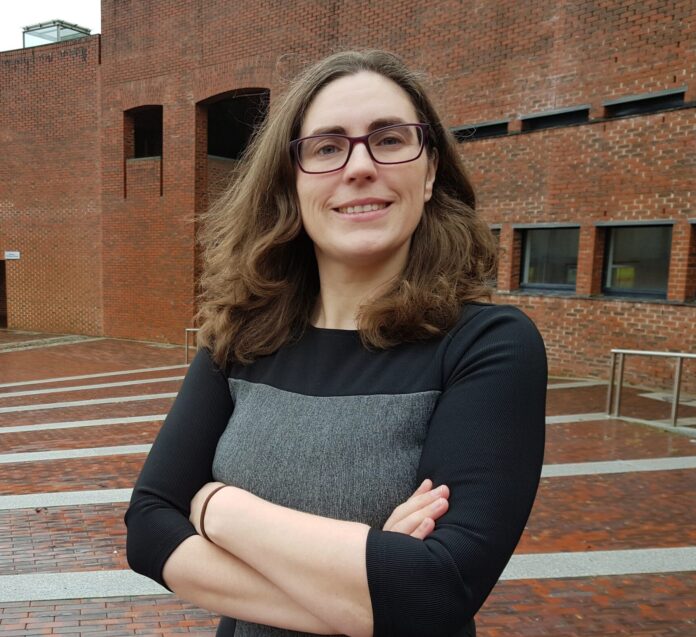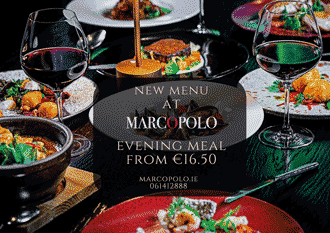
Those who were interested in ornithology in Ireland in 1866 would have done well to visit the home of Mr William Corbett Esq. in Rock Lodge, Castleconnell. In his home on the banks of the Shannon River, Corbett had amassed an extensive collection of rare birds from the four corners of the world.
The Castleconnell man displayed his feathered fancies in a large aviary and in several outhouses on his land. Among the collection was a white blackbird, exhibited in Crystal Palace, London, and a white thrush and starling, which were portrayed in the Illustrated London News. He also trained hawks to assist in local hunts. The most intriguing of his birds though were his countless parrots of various sizes and colours.
Undoubtedly Corbett’s collection gave rise to the popularity of pet rare birds in Limerick. In January 1866, the auctioneer Patrick Coleman, of 6 Rutland Street, listed a “handsome parrot and cage” as part of the sale of a household at 48 Catherine Street. The owner of the bird was relocating and decided not to take their talking pet with them. The fancy bird was listed among other items such as tables, chairs, bedroom furniture, and a nickel silver tea service.
This, unusually, wasn’t unusual at the time. In September 1866, auctioneer John Bernal put a selection of talking parrots from Africa and Australia up for sale. Among the collection were a Senegal parrot, a macaw, a lory, and a number of shell parrots, which we know today as budgerigars.
Bernal was a member of the Corporation as a representative of the Dock Ward for over twenty-five years, as well as a shareholder in the Waterford and Limerick Railway. In 1866, his sales rooms were in 23 George Street (now O’Connell Street) and mart in Thomas Street.
Each parrot was sold with a cage so the buyer could take it home with them that day. The names of some of these exotic pet owners were published in the auction report. Each of the purchasers had to pay a five per cent fee on the cost.
The most expensive of the birds, a silver-breasted grey parrot, was bought by Colonel Baron de Rottenberg for £3 12s 6d.
The Colonel was in Limerick for at least three years prior to the sale. In September 1863, he attended the Limerick Races. Like so many in Limerick, de Rottenberg would holiday in Kilkee and go fishing in Killaloe. George Frederick de Rottenburg (1807-1894) was a British Army officer who arrived in Canada in 1830s as a militia officer in Upper Canada, before eventually leaving in 1852. He was the son of Franz de Rottenburg, who served with distinction in the British Army in the War of 1812.
A Dr Gelston spent almost three pounds on his parrot. There were two Dr Gelstons in Limerick at the time: Robert Ringrose Gelston of 68 George Street and his son Thomas J Gelston, only a few doors away in 62 George Street.
Robert Ringrose Gelston had arrived in Limerick in the 1840s, taking up posts as a surgeon at the Lunatic Asylum, County Gaol, County Infirmary, St John’s Fever Hospital, Barrington’s Hospital, and the Lying-in Hospital.
Thomas J followed in his father’s footsteps becoming a surgeon in Barrington’s Hospital and the Lying-in Hospital. It is impossible to tell from the original records which of the good doctors bought the parrot.
Another of the birds was sold for £2 7s 6d to George Vandaleur Esq., of Ballinamona near Croom. Vandaleur was a member of the 6th Inniskilling Dragoons. He was interested in nature and was a commissioner for the Munster Fair. He was sixty years old when he bought his parrot.
Matthew John DeCourcey, Esq., of 98 George Street, was solicitor and city coroner. He paid £2 and 15 shillings for his parrot. At twenty-five years old, he was one of the younger pet bird owners.
JW Casey came all the way from Rathkeale to pay £2 and 10 shillings for his parrot.
Lavinia Maria D’Esterre was perhaps feeling lonely after the death of her second husband Robert Kerr D’Esterre. She spent almost two pounds on her exotic bird. Lavina’s first husband was Captain McCausland of the 89th regiment. Unusually, her second husband was also previously married. His first wife, Laura Vassell, died in 1834 of consumption.
When the parrot owner’s son Henry came of age in 1863, the family held a banquet to celebrate their county estate at Rossmanaher, County Clare. As with most families of their class at the time, the D’Esterre’s also had a city home where they could carry out business and entertainment during the colder months.
John Henry Hall Esq., of Villa Nova, Laurel Hill, an attorney and clerk to the petty sessions at the Court House, bought a rare grey in an African ornamental cage for 37 shillings and 6 pence. Hall was a member of the Corporation for the Custom House Ward. He resigned this position in the Corporation two years after buying his parrot.
Parrots were not the only birds on sale in Bernal’s showrooms. He also had love birds, cardinal birds, wax bills, Quaker birds, and doves. On the day of the sale, high winds and rain kept many at bay with one reporter noting that with “the storm outside and the babel within, it would take very little short of a railway whistle to be intelligible; still business was done.”
While these fancy birds made their way into the homes of the wealthier citizens in the city, having a pet bird was not restricted by finances as bird catching was a common pastime in Limerick. Children would seek out young birds or even eggs to raise in captivity. Song birds were particularity prized. Once their use as message carriers was over, pigeons also became ideal pets as they were easily trained. Though, unlike the songbirds, they were rarely kept in the family home.
One of the final events on the Irish calendar saw the hunting of the wren. The Christmas period was not complete in Limerick until the 26 December when men and boys would go out in the early morning to capture the tiny native bird. A wren, once caught, was displayed on the end of a pole for all to see.
This tradition still takes places in some parts of the county, although the locating of a real bird is no longer tradition and a fake takes its place.
For further contemporary reading on Victorians and their pet birds, check out:
https://www.victorianvoices.net/topics/pets/petbirds.shtml


